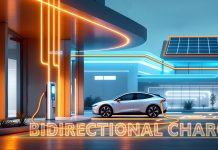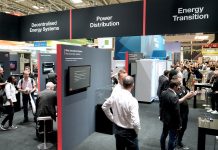
Ian Johnston, CEO of rapid charging network Engenie, lays out the key considerations and choices for businesses planning to use EV charging to attract and retain customers.
In recent years there has been a “land grab” for rapid chargers, says Ian Johnston, CEO of EV charging network Engenie, one of Good Energy’s partner networks.
That surge is a result of businesses ensuring they have chargers in prime strategic locations, but also because of a shortage of power network capacity. A “grid grab” as much as a land grab, says Johnston.
“In most cases, there is sufficient network capacity. But we are seeing that shift as more chargers are being installed.”
Paying for grid upgrades, alongside associated civil works, can render business cases uneconomic. “Hence businesses should make a decision on EV charging today,” he says, “even if we are at early stages of the market.”
Key to a successful charging strategy is “working out how long you want people to park in the bays,” says Johnston. “It is critical to match dwell time with the type of charger you install.”
Petrol stations, for example, will want the most powerful DC chargers, 150kW upwards, in order to charge vehicles in a few minutes and reduce queues.
A supermarket or pub will probably want customers to stay for 45 minutes to an hour, durations that suit 50kW rapid chargers.
For workplace chargers or households, with cars parked for hours on end, AC charging from 7kW to 22kW has a lighter electrical requirement.
While the EV industry is “exploding right now”, it is crucial to “pick partners that have delivered that type of infrastructure to a site like yours,” says Johnston.
“If you are putting 100 slow chargers into an office, you need to work with someone who has done it before at that scale. If you are putting rapid charging into a live retail environment, that is a very different process.
“So it is important to do your research work with the best people in each sector rather than those with the most convincing sales people.”
Business models and charging choices
The cost of installing slower AC charging infrastructure is relatively low, less than £1,000 per point, according to Johnston. So many firms will chose to procure, own and operate themselves, though there are leasing models available.
For DC rapid chargers, the costs are significantly higher. Engenie “typically sees site costs of £75,000-£100,000 for two rapids,” says Johnston, which includes legals and cabling.
As such, most of its customers opt for a fully funded route, where the charge point operator (CPO) pays everything and the landlord earns a share of charger income, “plus the benefits of footfall, dwell time and crucially, securing that grid capacity,” says Johnston. Pub chain Marston’s, which is installing 200 rapid chargers, has taken that approach.
A second option is for businesses to invest in the infrastructure and operate it themselves. “There are a number of businesses that believe this is strategically the right thing to do,” Johnston says.
“In many cases, the cost renders this unattractive for landlords, but another consideration is that DC charging is not a one off procurement decision. The harder part is running the service: call centre aggregation, app integrations, pricing, managing a customer campaign to incentivise customers to come to your site,” he continues. “We believe that is why CPOs exist. But there are companies with appetite to build infrastructure across their sites and we will see more of that.”
Johnston believes the pull of consumer demand and push of policy and regulation is now aligned around EVs.
Meanwhile manufacturers are set to launch dozens of new models in the UK this year, many aimed squarely at standard small car drivers.
“We will see a huge surge in demand,” he says. “Hopefully, supply will keep up.”
 Free report: EVs and charging infrastructure for businesses
Free report: EVs and charging infrastructure for businesses
This article was first published in Good Energy’s 2020 EV report. To learn more about EVs, charging infrastructure, and how other businesses are tackling the road ahead, download your free copy here.



